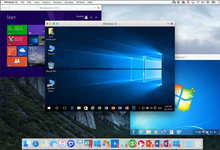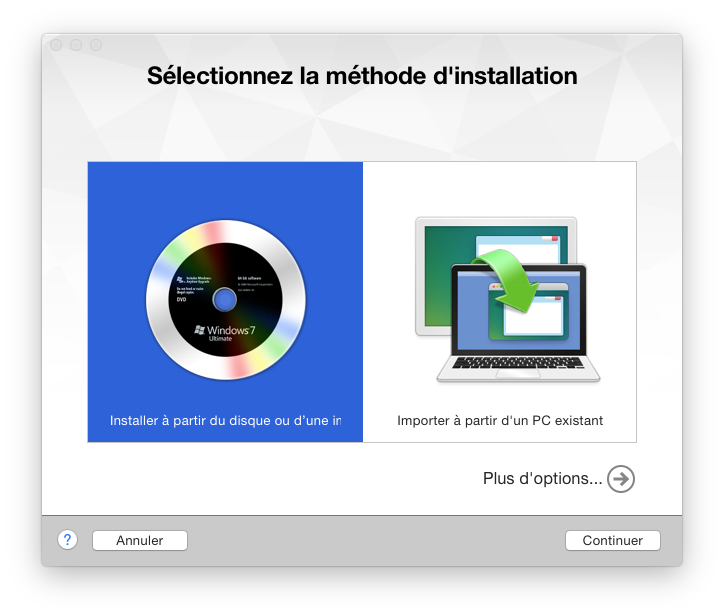- Vmware Fusion 10.1.3
- Vmware Fusion 10.1 3 9472307 Dmg Mac
- Vmware Fusion 10.1 3 9472307 Dmg Update
- Vmware Fusion 10.1 3 9472307 Dmg Free
Updated OS Support
Workstation 16 supports the latest 2004 version of Windows 10, including Hyper-V mode compatibility for Device & Credential Guard and WSL, as well as supporting new releases of the most popular Linux distributions such as Red Hat, Fedora, CentOS, Debian, Ubuntu and more.
Containers and Kubernetes Clusters
Workstation 16 Pro and Player both provide a new CLI for building and running OCI containers and Kubernetes clusters: ‘vctl.’ Supports thousands of pre-built container images, as well as building custom images from standard Dockerfiles.
Graphics Engine Enhancements for Windows and Linux
Workstation 16 now provides a DirectX 11 and OpenGL 4.1 compliant virtual graphics device to Windows virtual machines, adding new compatibility for hundreds of apps and games. Linux hosts can now use Intel Integrated GPUs with our new Vulkan rendering engine, delivering DirectX 10.1 and OpenGL 3.3 to VMs without needing more a powerful discrete GPU.
vSphere 7 Compatibility
Workstation has been updated with compatibility for vSphere 7, including virtual machine hardware and remote ESXi and vCenter Server connections
Get Workstation 16 Now
VMware Fusion is a software hypervisor developed by VMware for Macintosh computers. VMware Fusion allows Intel-based Macs to run virtual machines with guest operating systems—such as Microsoft Windows, Linux, NetWare, Solaris, or a different version of macOS—within the host macOS operating system. VMware Desktop Hypervisors: VMware Workstation and VMware Fusion: Local Mac, Windows and Linux Virtualization Desktop Hypervisor products from VMware provide IT pros, developers and businesses alike with a powerful local virtualization sandbox to build, run or support apps of any kind.
Device drivers improve sound, graphics, networking, and storage performance. If you perform a custom VMware Tools installation or reinstallation, you can choose which drivers to install.
The set of drivers that are installed when you install VMware Tools depends on the guest operating system and the VMware product. For detailed information about the features or functionality that these drivers enable, including configuration requirements, best practices, and performance, see the documentation for your VMware product. The following device drivers can be included with VMware Tools.

 This virtual driver enables 32-bit displays, high display resolution, and faster graphics performance. When you install VMware Tools, a virtual SVGA driver replaces the default VGA driver, which allows for only 640 X 480 resolution and 16-color graphics.
This virtual driver enables 32-bit displays, high display resolution, and faster graphics performance. When you install VMware Tools, a virtual SVGA driver replaces the default VGA driver, which allows for only 640 X 480 resolution and 16-color graphics. On Windows guest operating systems whose operating system is Windows Vista or later, the VMware SVGA 3D (Microsoft - WDDM) driver is installed. This driver provides the same base functionality as the SVGA driver, and it adds Windows Aero support.
For example, Windows Server 2008 defaults to LSI Logic SAS, which provides the best performance for that operating system. In this case, the LSI Logic SAS driver provided by the operating system is used.
VMware supplies a special SCSI driver for virtual machines that are configured to use the BusLogic virtual SCSI adapter. Cool dmg palette to play pokemon in minecraft. Virtual machines do not need this driver if they do not need to access any SCSI devices or if they are configured to use the LSI Logic virtual SCSI adapter.

The driver is included as part of the VMware Tools package or comes bundled with VMware ESX/ ESXi. It is available on the host as a floppy image at /vmimages/floppies/vmscsi.flp. The driver can be used in Windows XP, Windows Server 2003, or Windows 2000.
When you install VMware Tools, a VMXNET NIC driver replaces the default vlance driver.

- File Introspection Driver: The File Introspection driver uses the hypervisor to perform antivirus scans without a bulky agent. This strategy avoids resource bottlenecks and optimizes memory use.
- Network Introspection Driver: The Network Introspection driver supports NSX for vSphere Activity Monitoring.
Do not delete or replace existing inbox drivers for Linux that are distributed by your OS vendors. Deleting or replacing these drivers might cause conflict with future updates to the drivers. Contact your OS vendor or OS community for availability of specific updates to drivers. Mac lift deluxe 2005 manual keypad.
Vmware Fusion 10.1.3
See http://kb.vmware.com/kb/2073804 for information about availability, maintenance, and support policy for inbox drivers for Linux.
Vmware Fusion 10.1 3 9472307 Dmg Mac
Vmware Fusion 10.1 3 9472307 Dmg Update
If you use Workstation or Fusion, you can install the Shared Folders component. With Shared Folders, you can easily share files among virtual machines and the host computer. The VMHGFS driver is a file system redirector that allows file system redirection from the guest operating system to the host file system. This driver is the client component of the Shared Folders feature and provides an easy to use alternative to NFS and CIFS file sharing that does not rely on the network. For Linux distributions with kernel version 3.10 and later, a new FUSE based Shared Folders client is used as a replacement for the kernel mode client.
Vmware Fusion 10.1 3 9472307 Dmg Free
VMware Tools installation include the VMware AppDefense, a security management and monitoring solution. AppDefense agent can be installed on the guest virtual machine using the VMware Tools installer. However, VMware Tools cannot install the AppDefense component automatically. You need to install the component manually.
